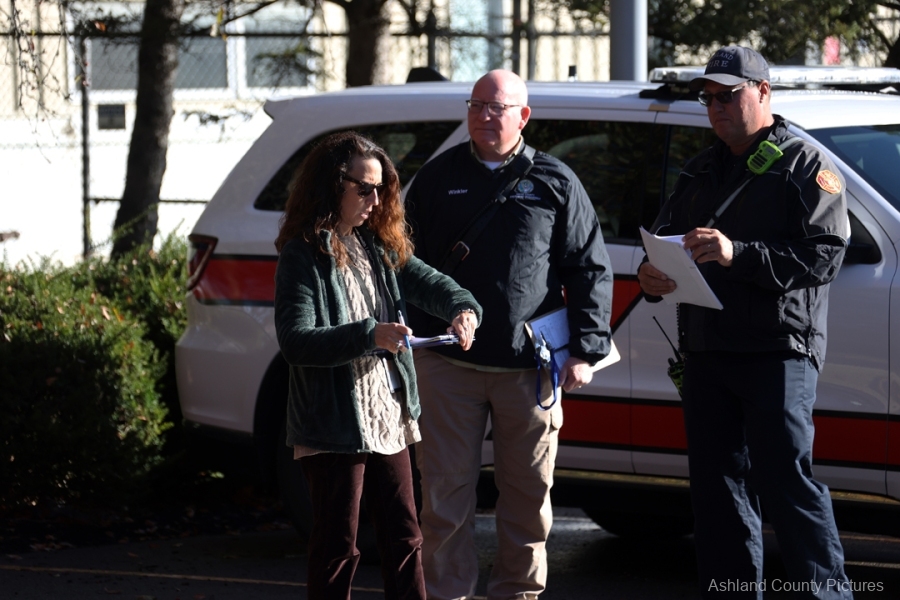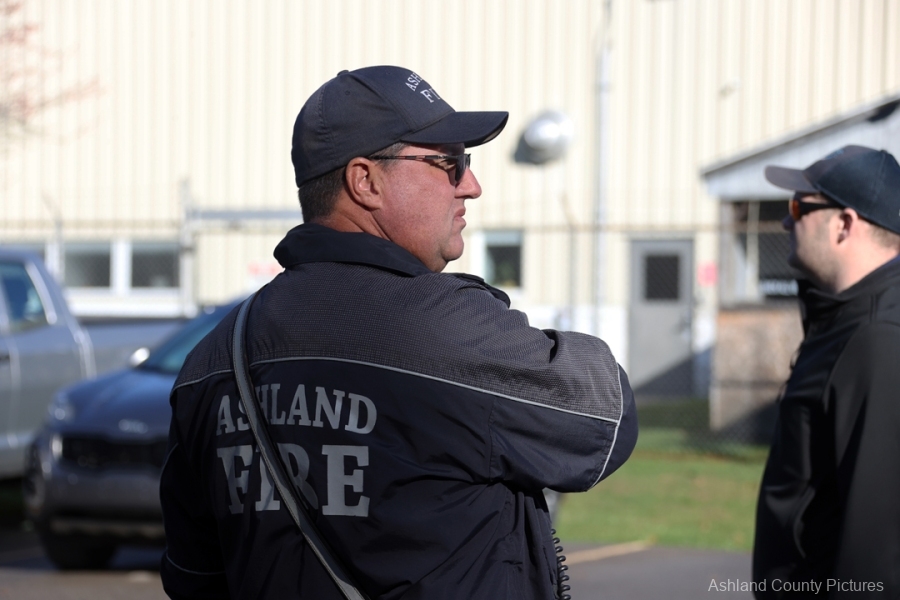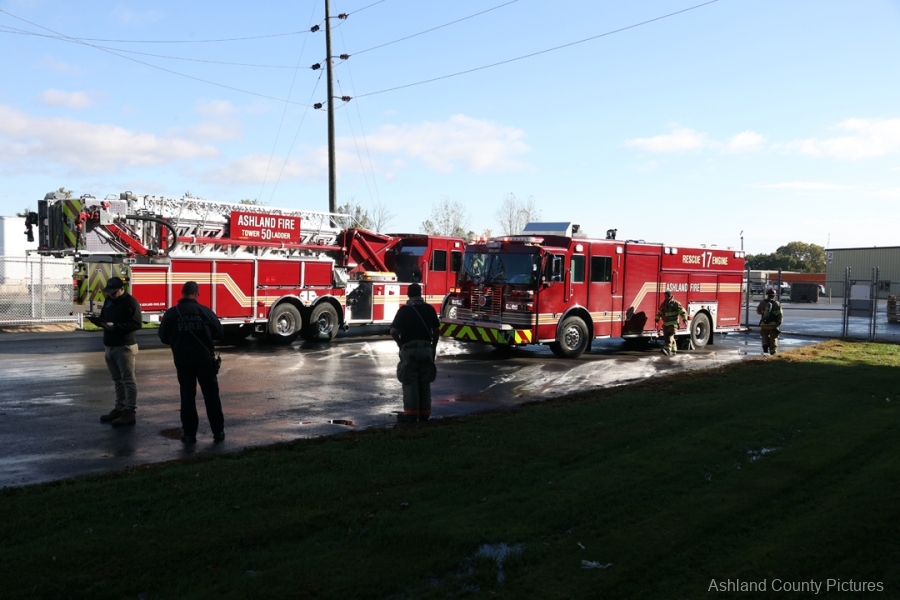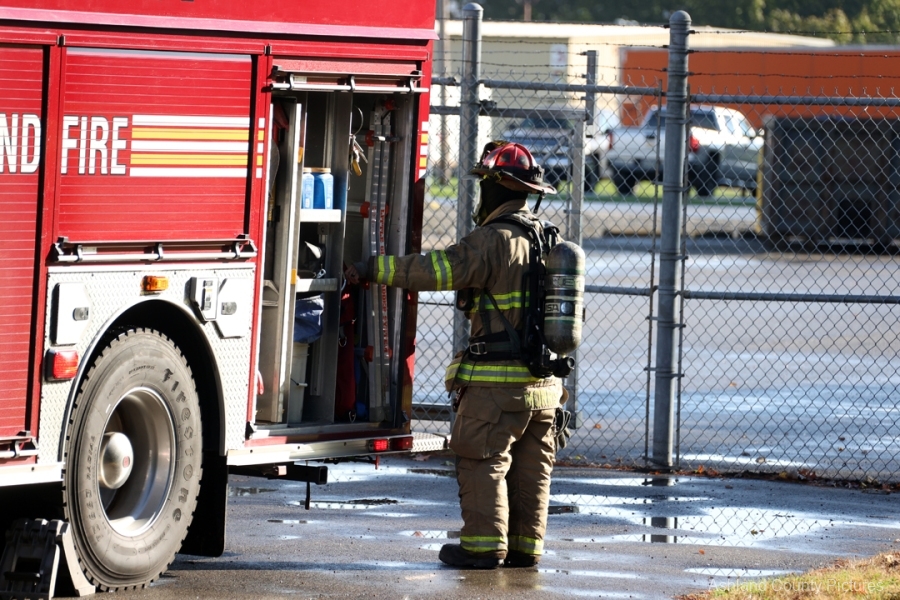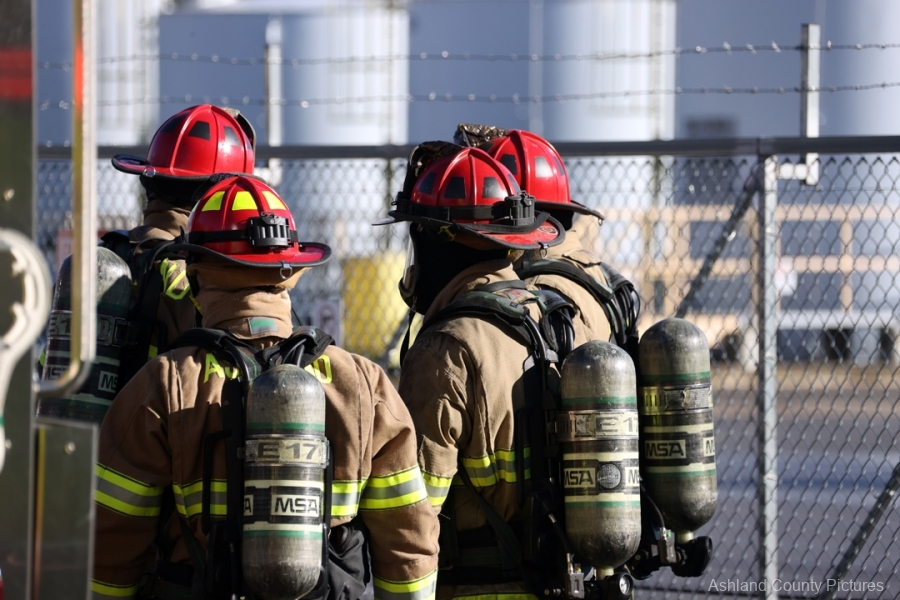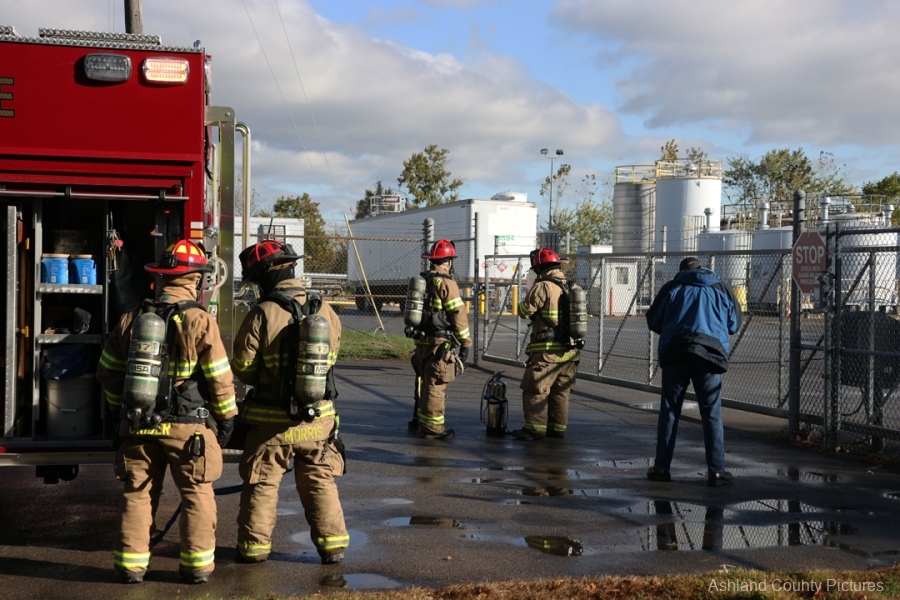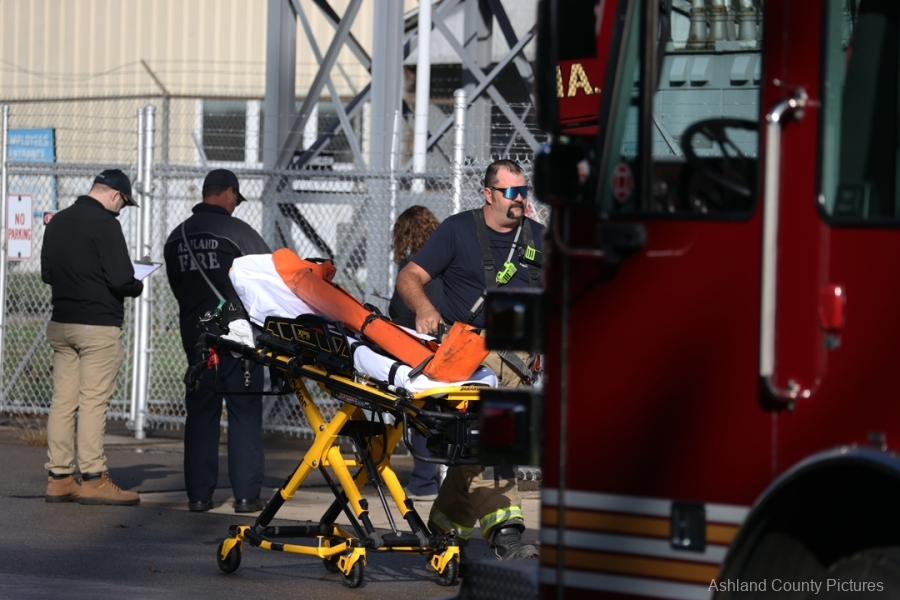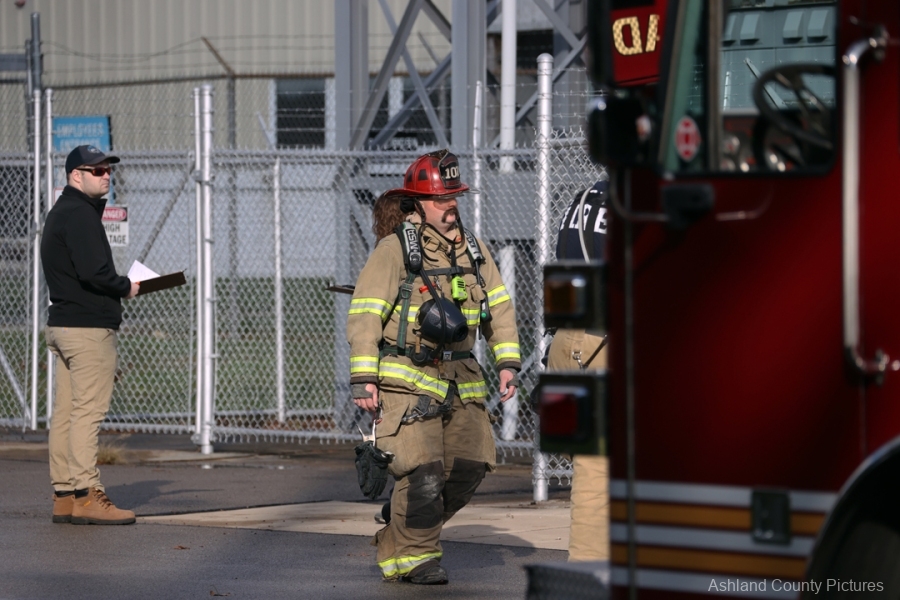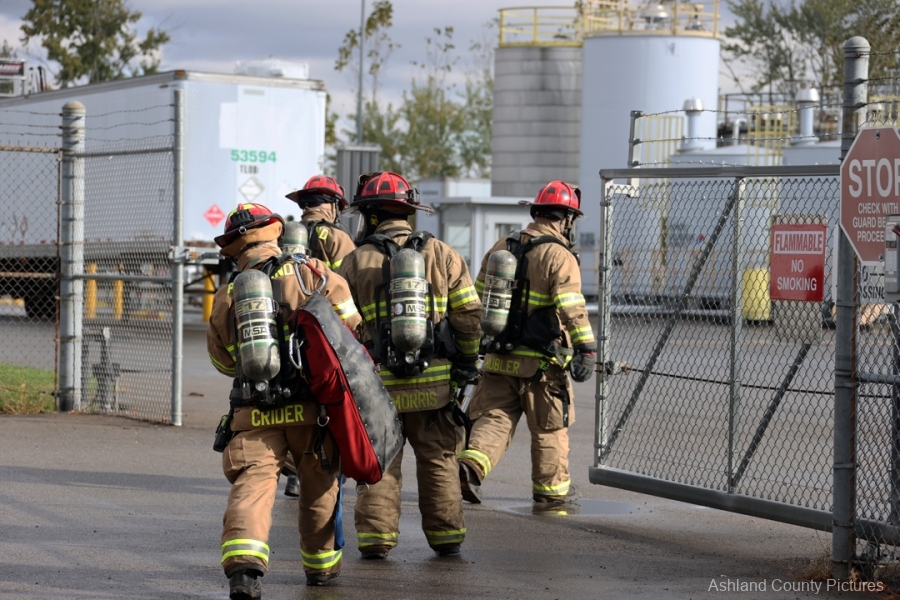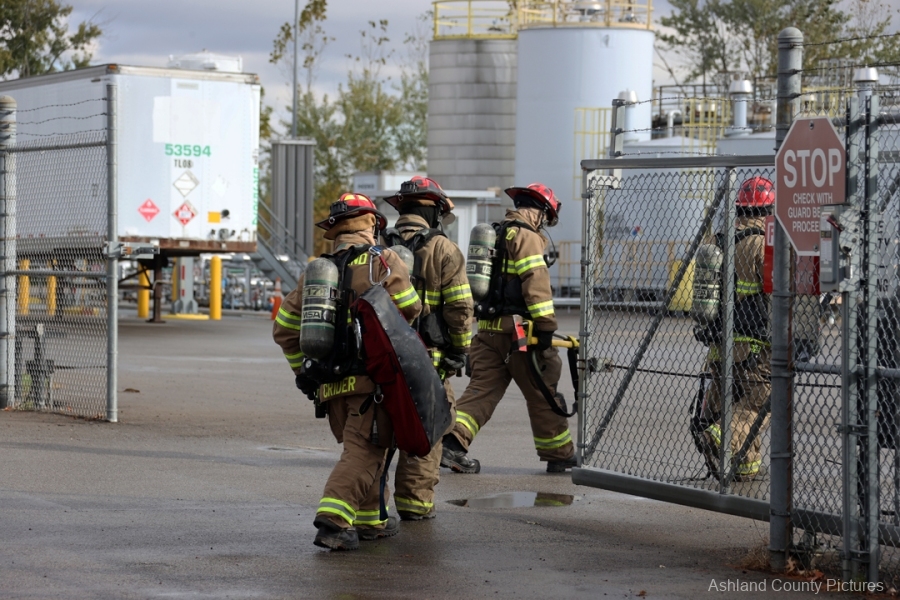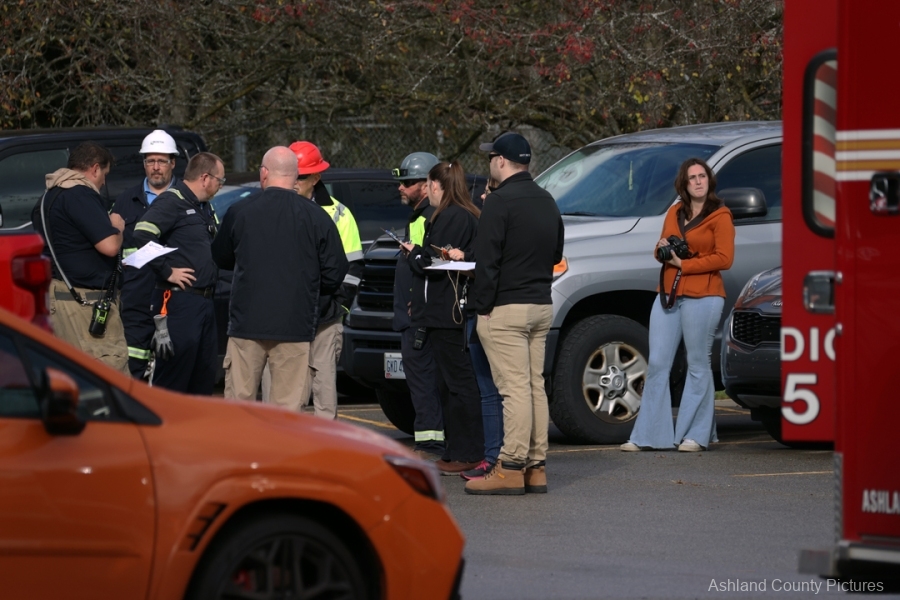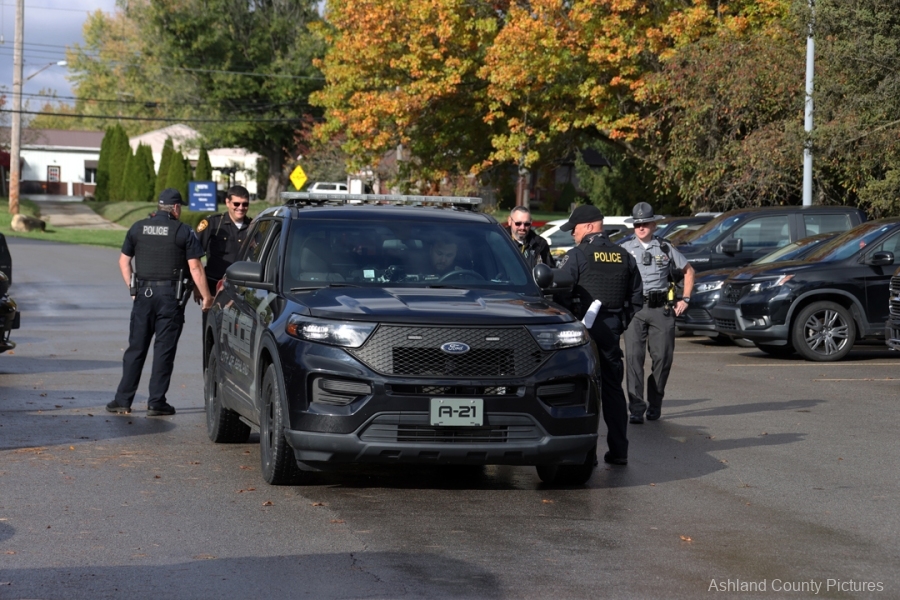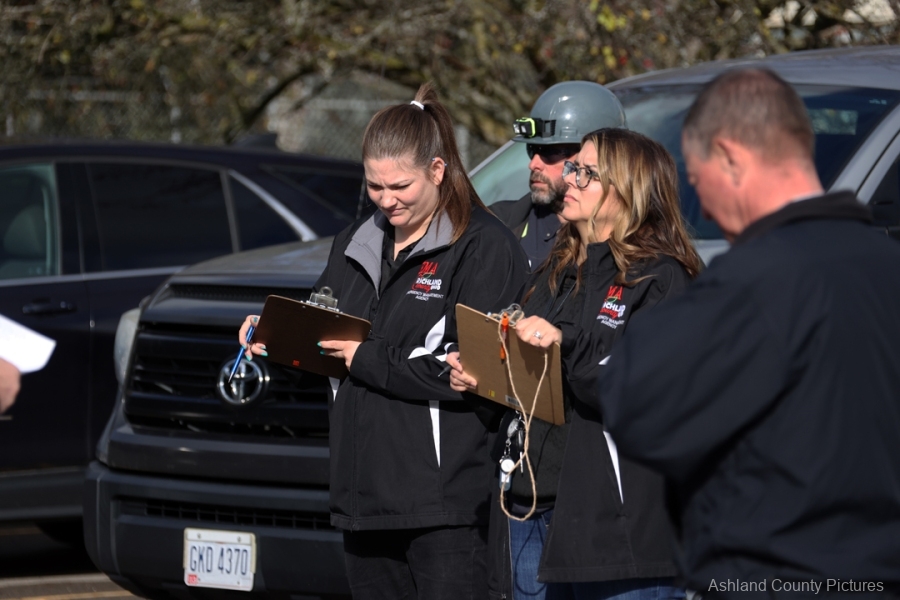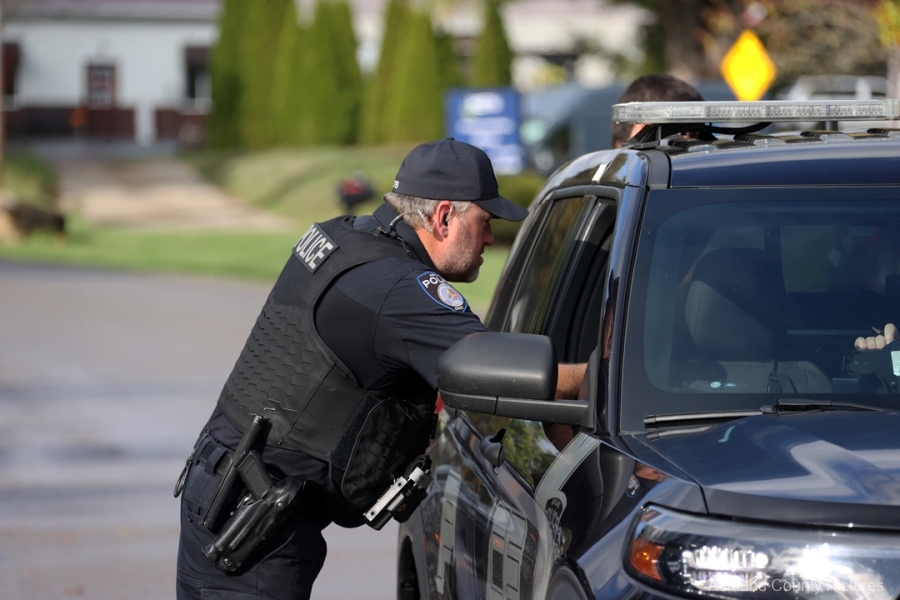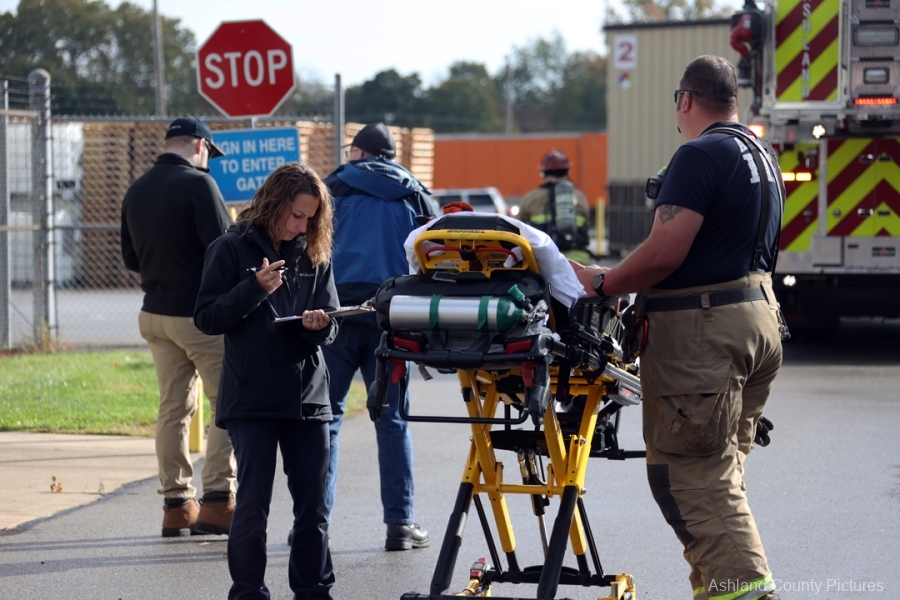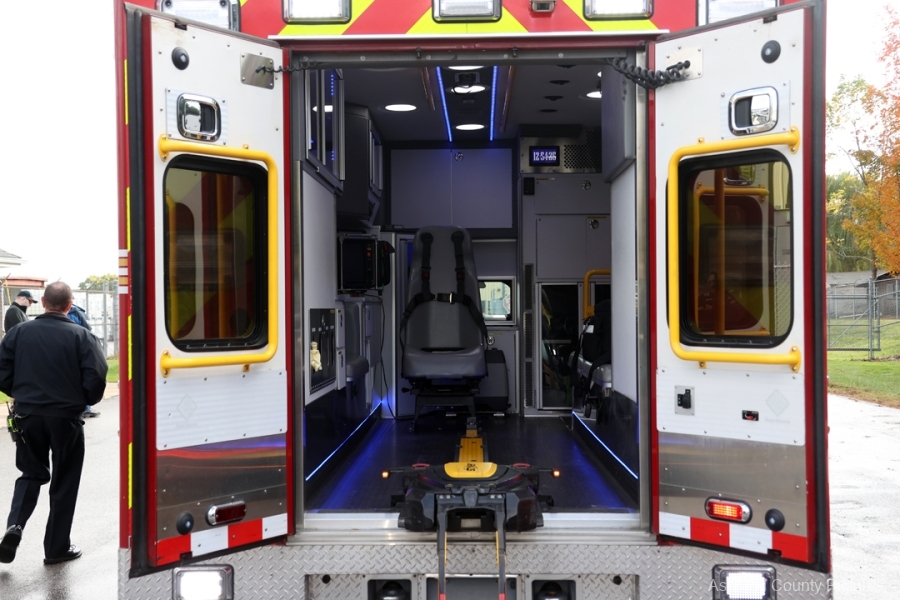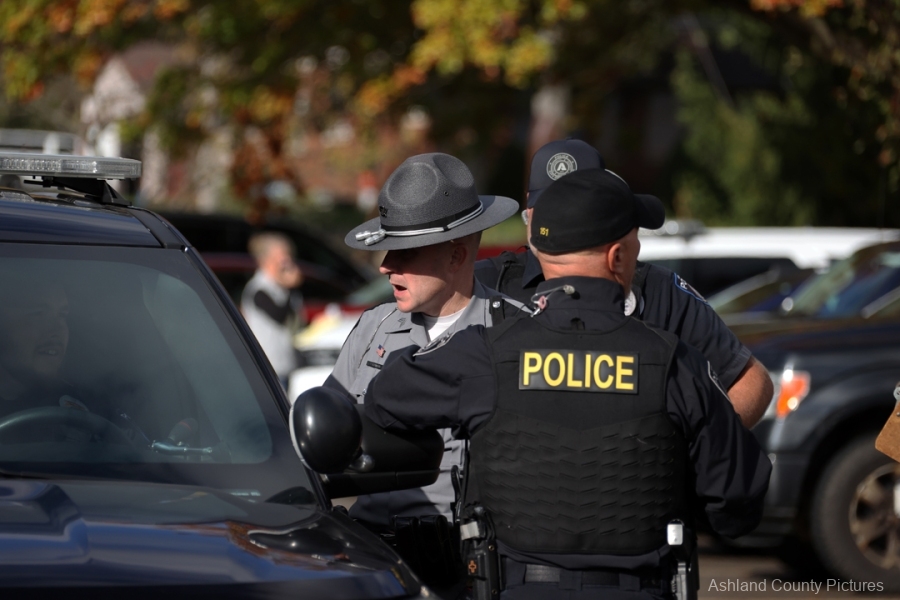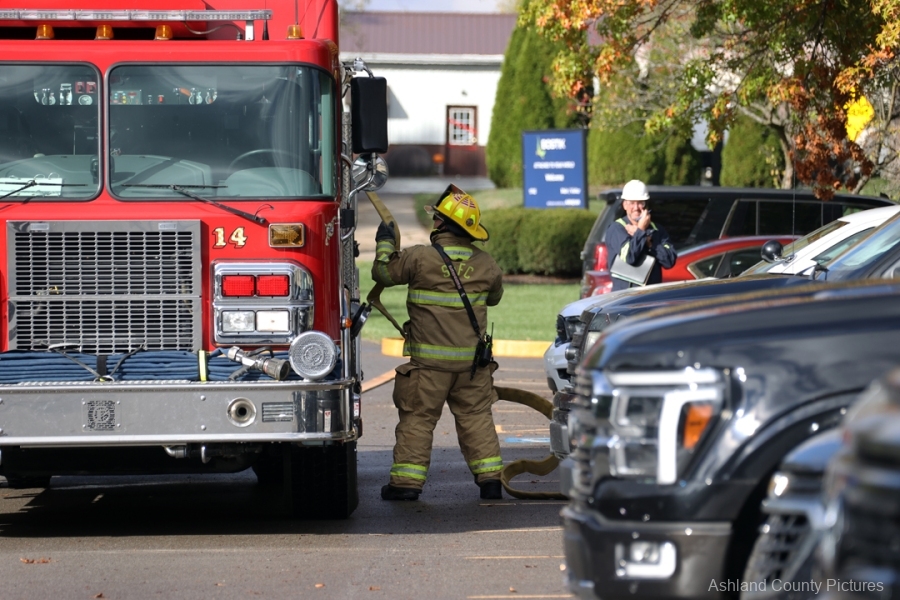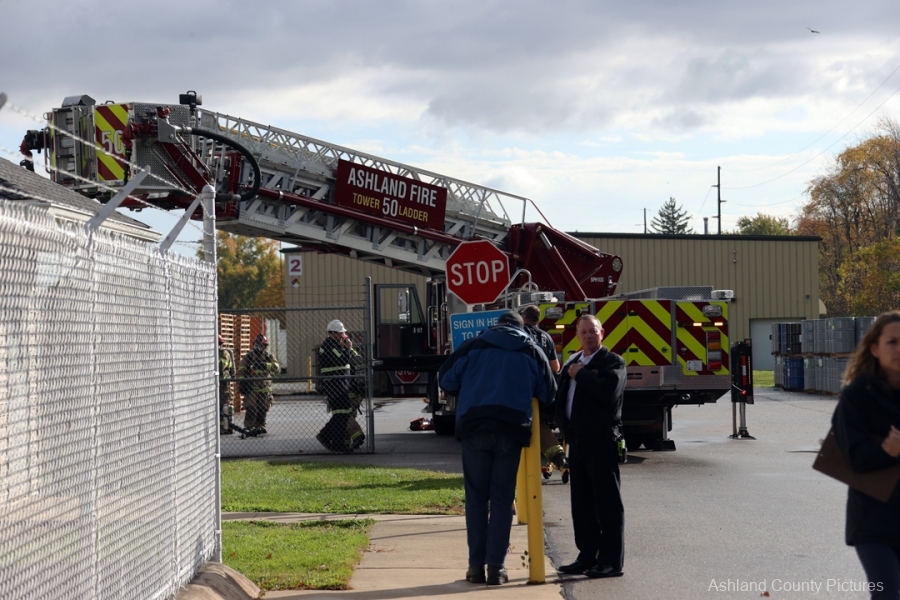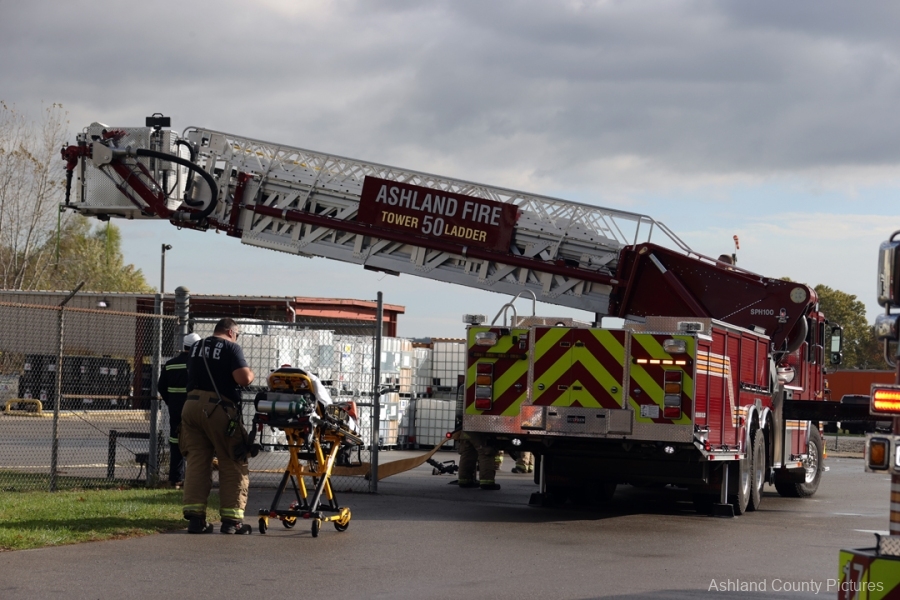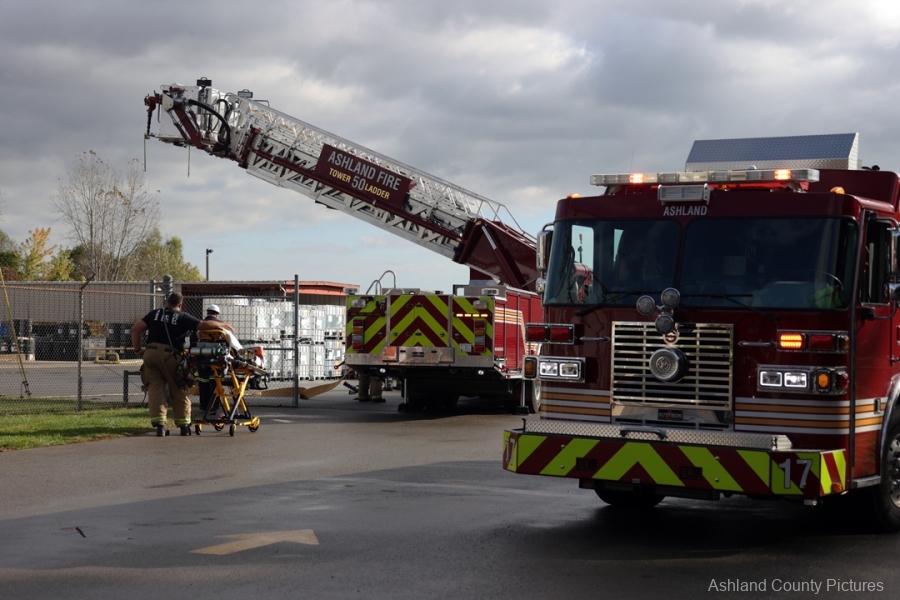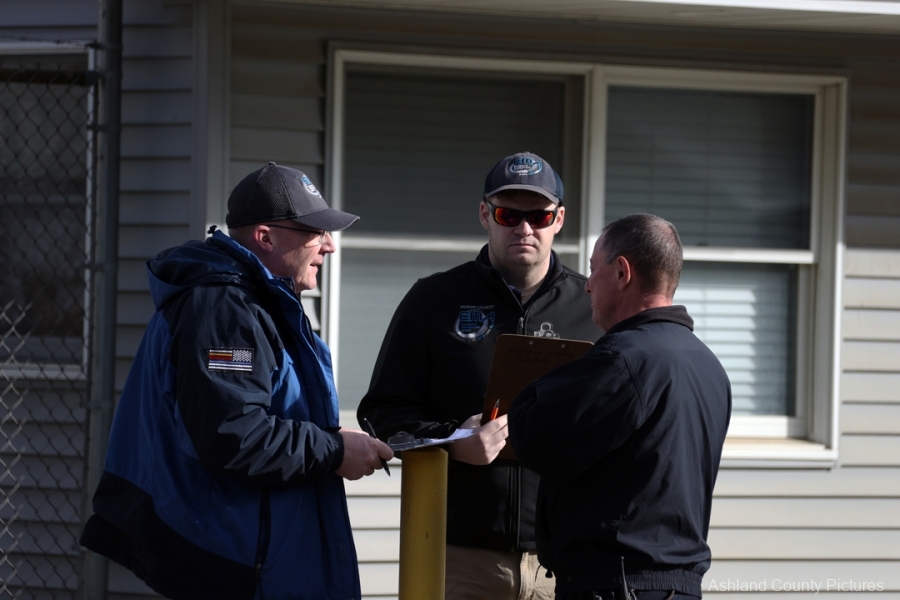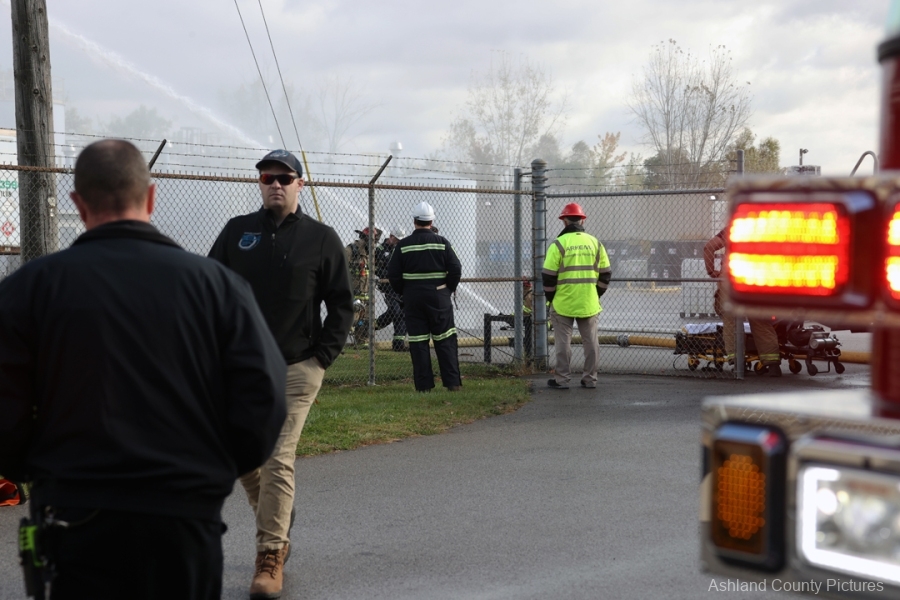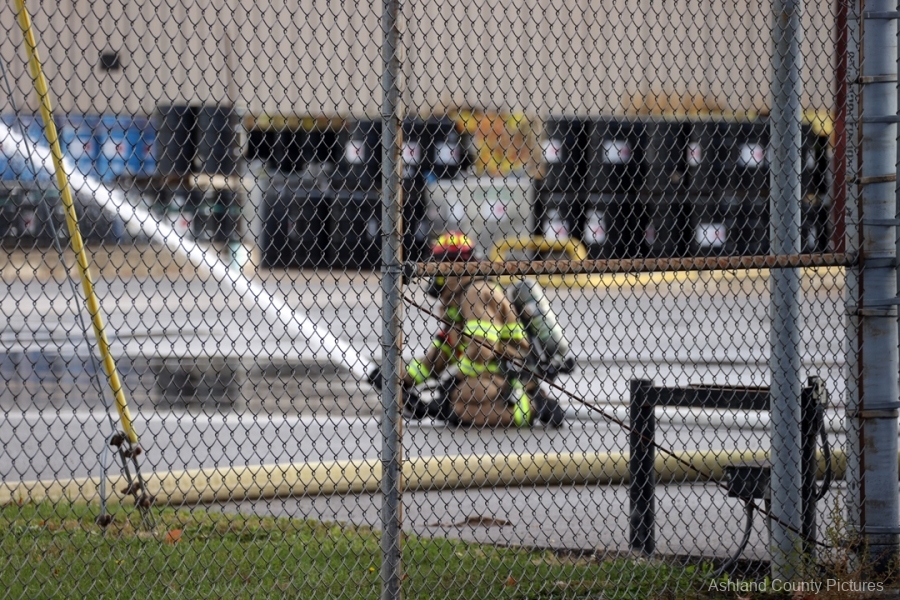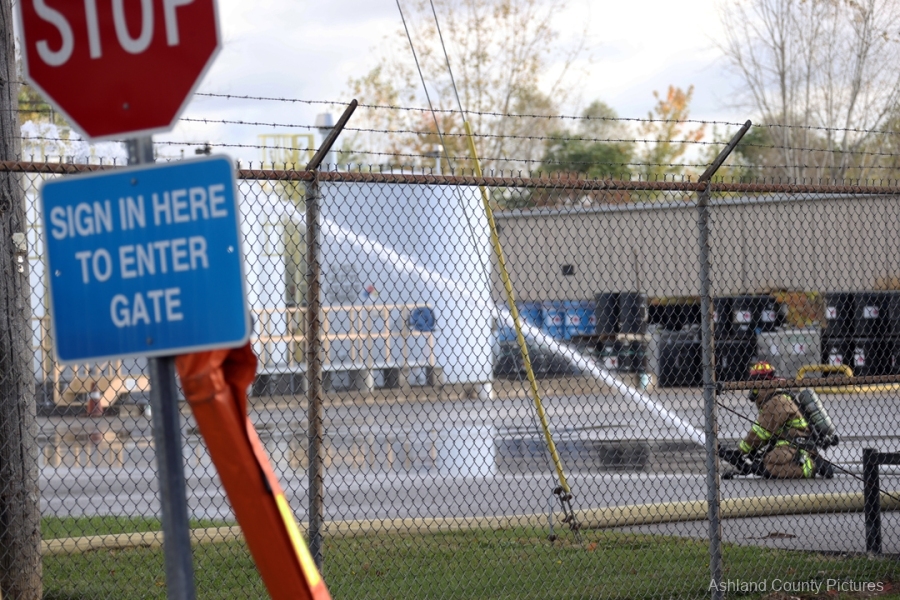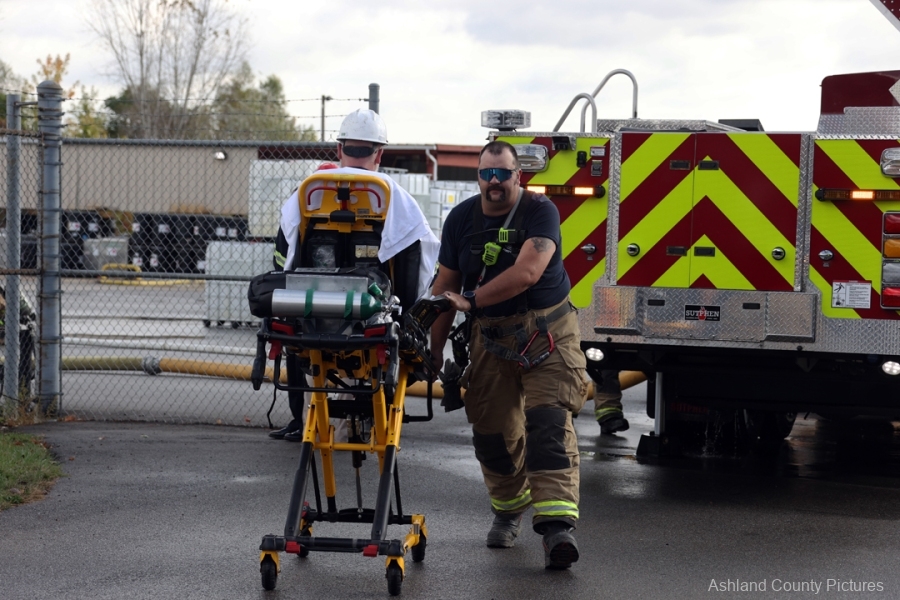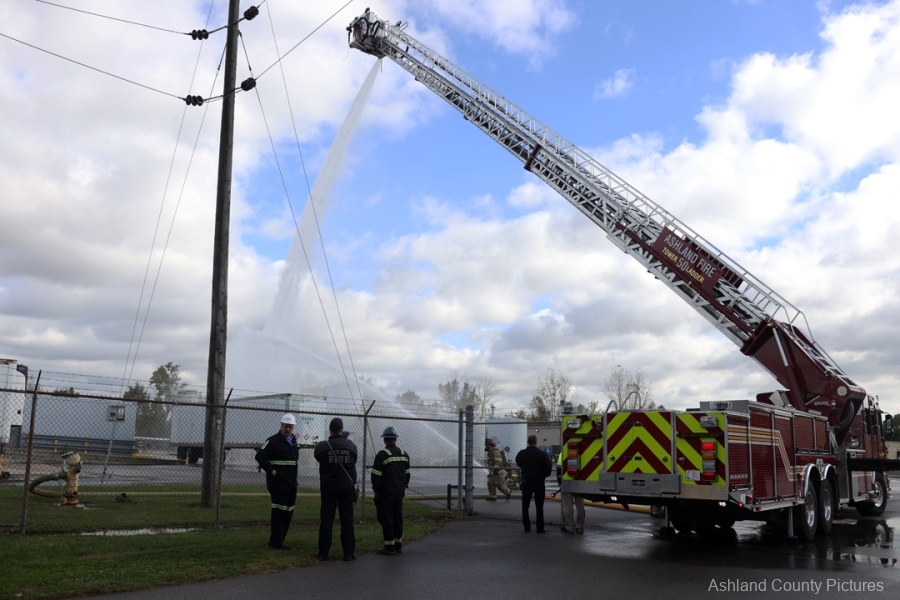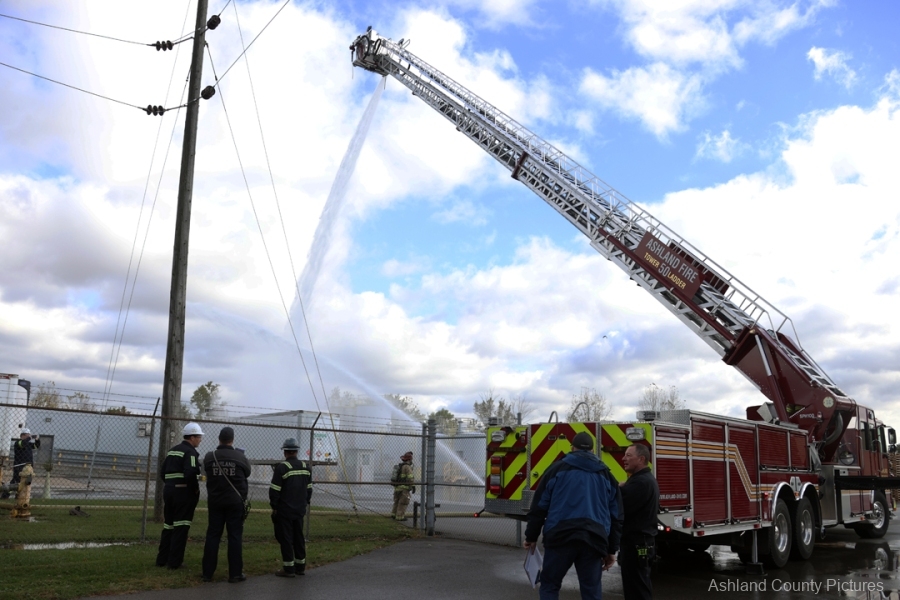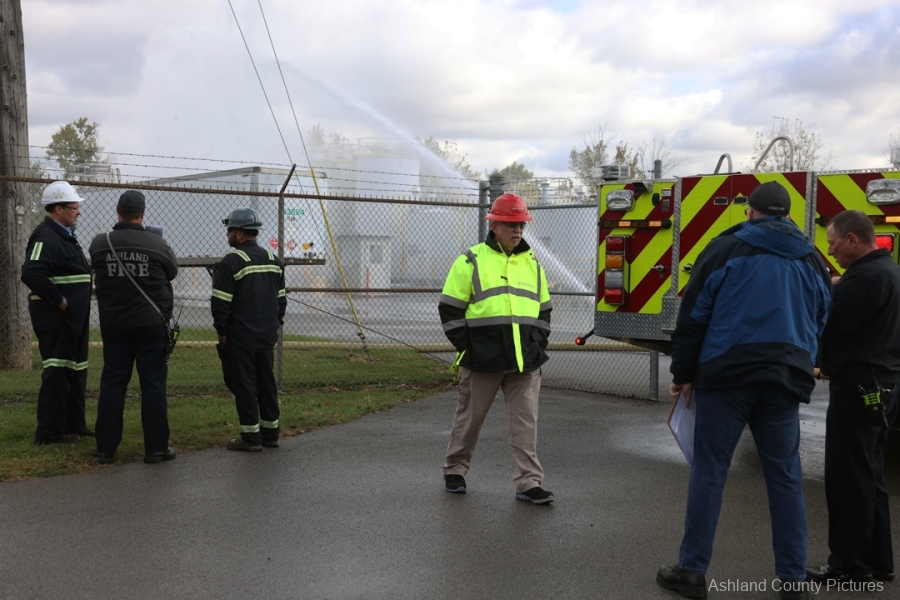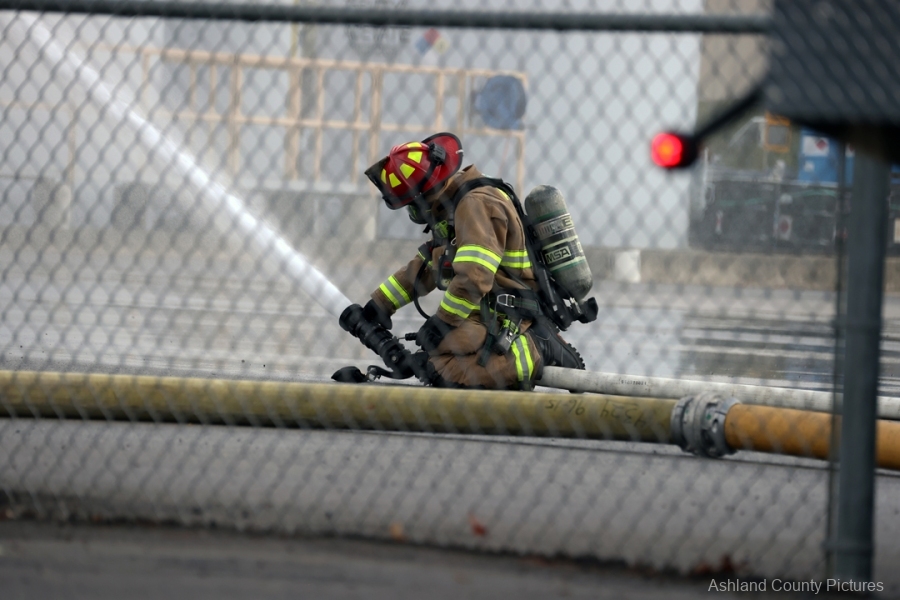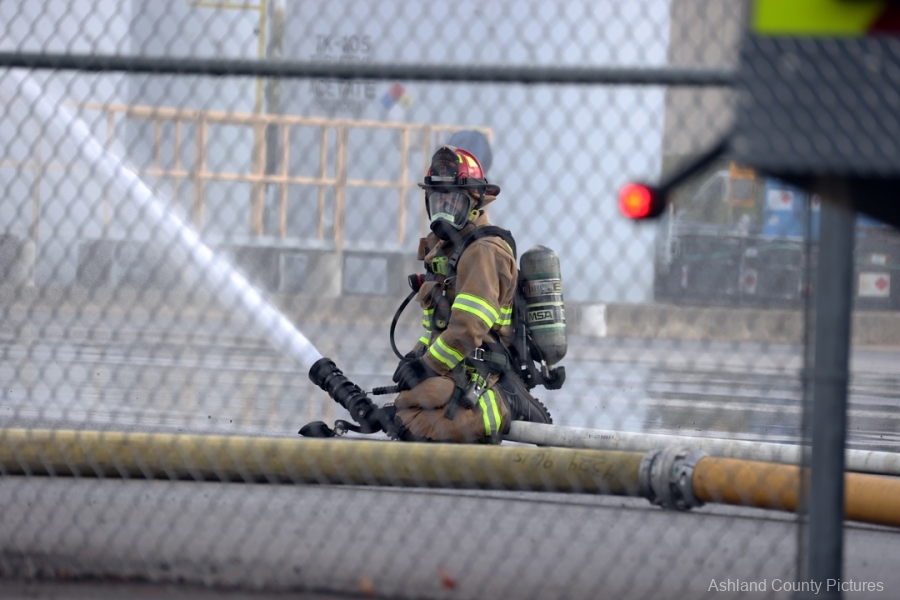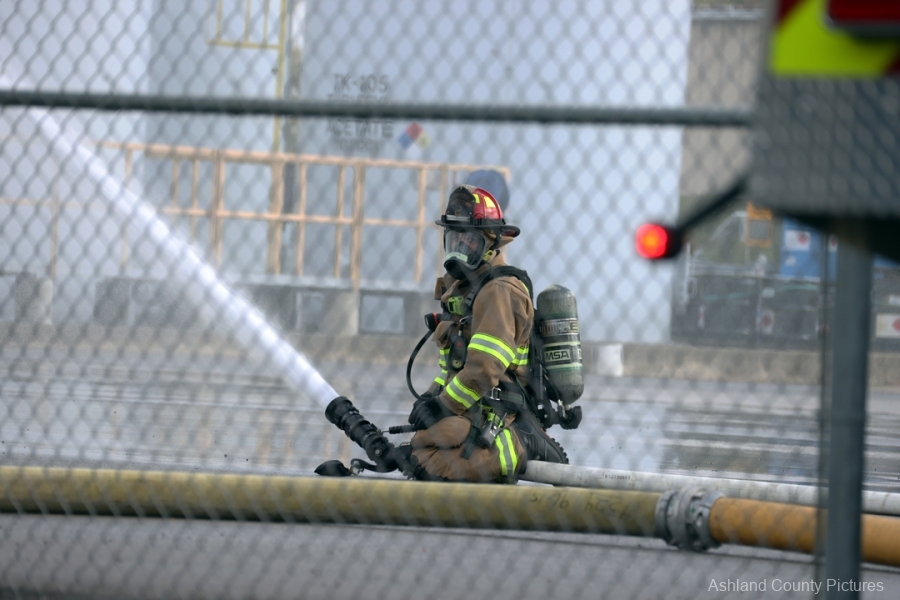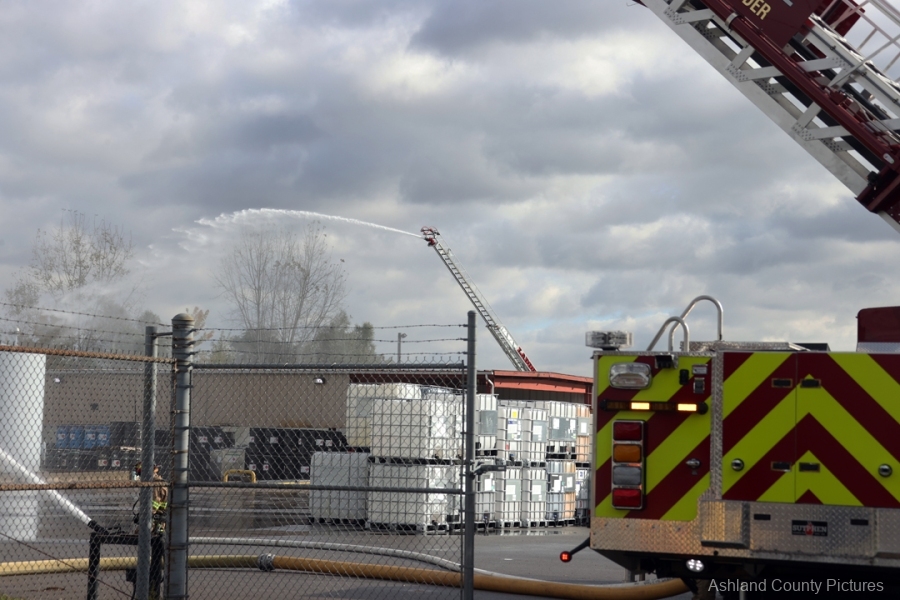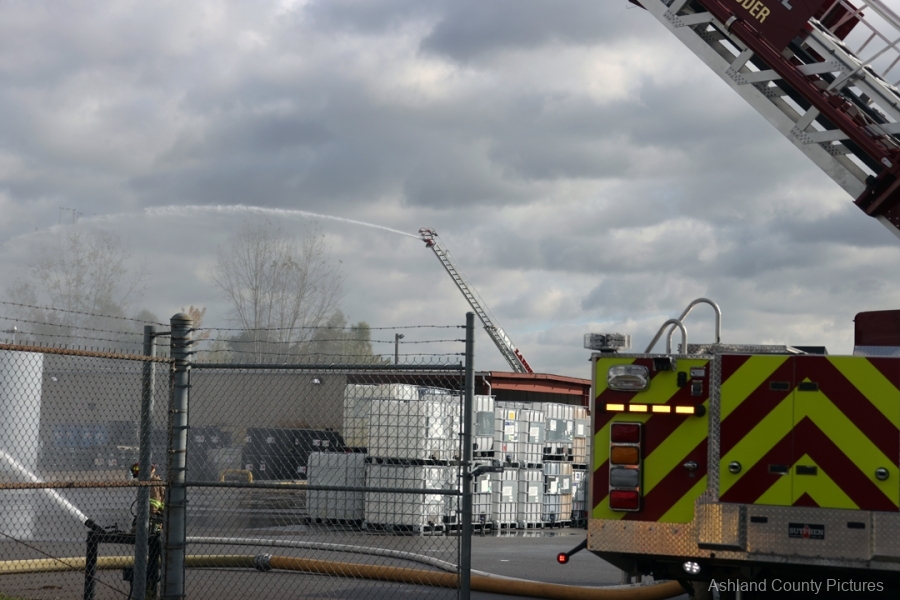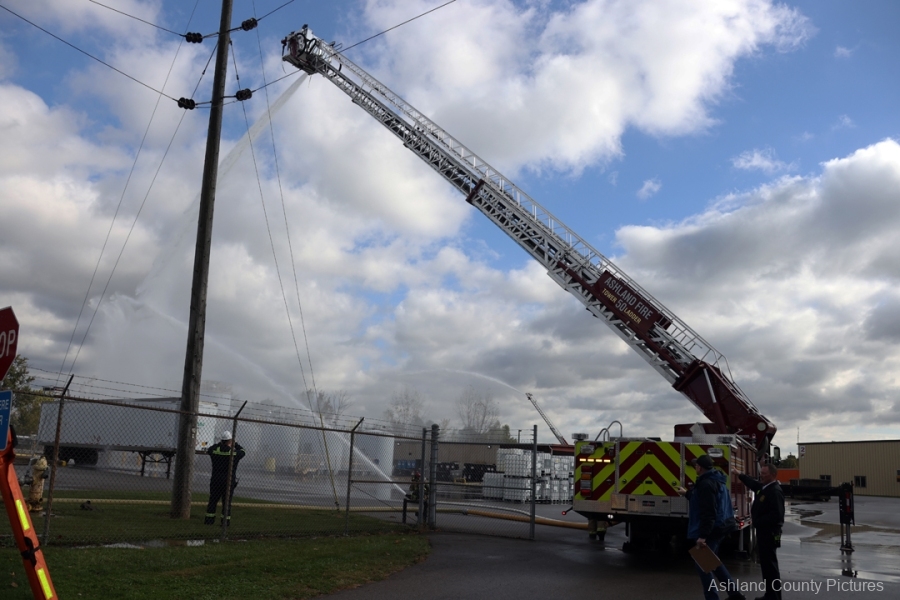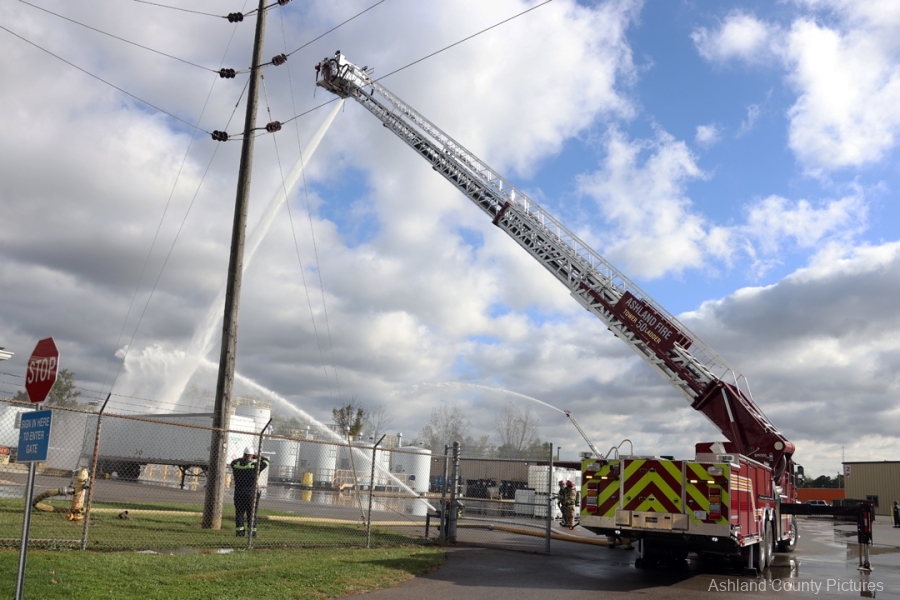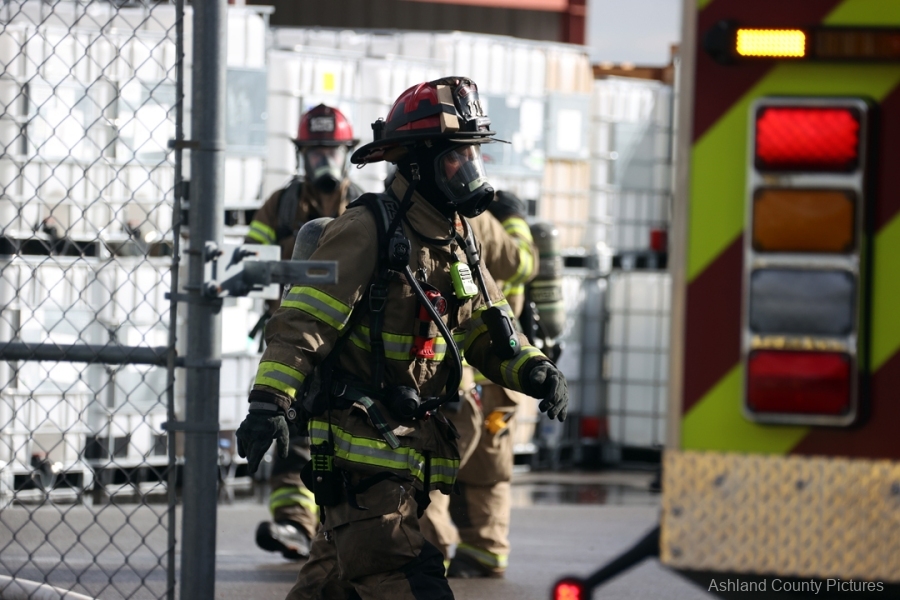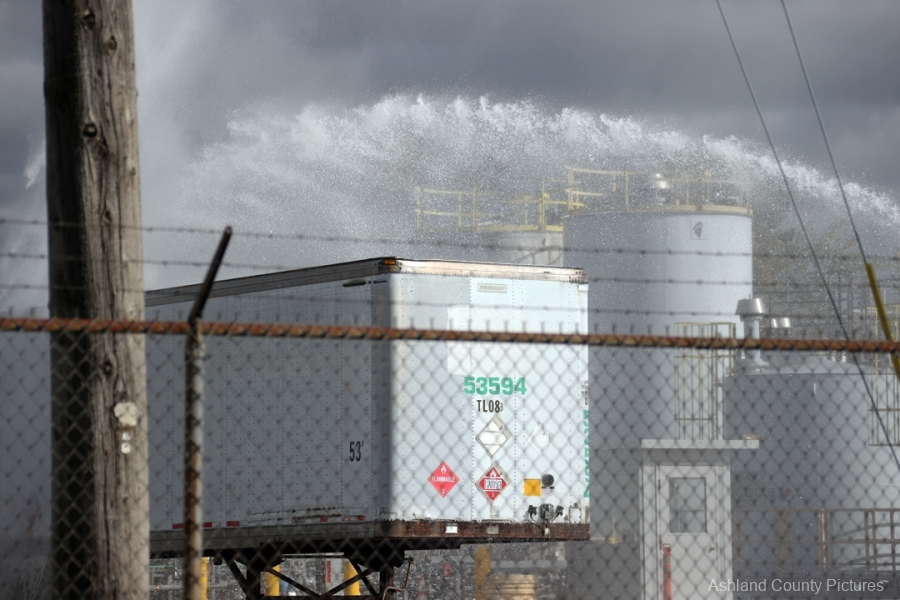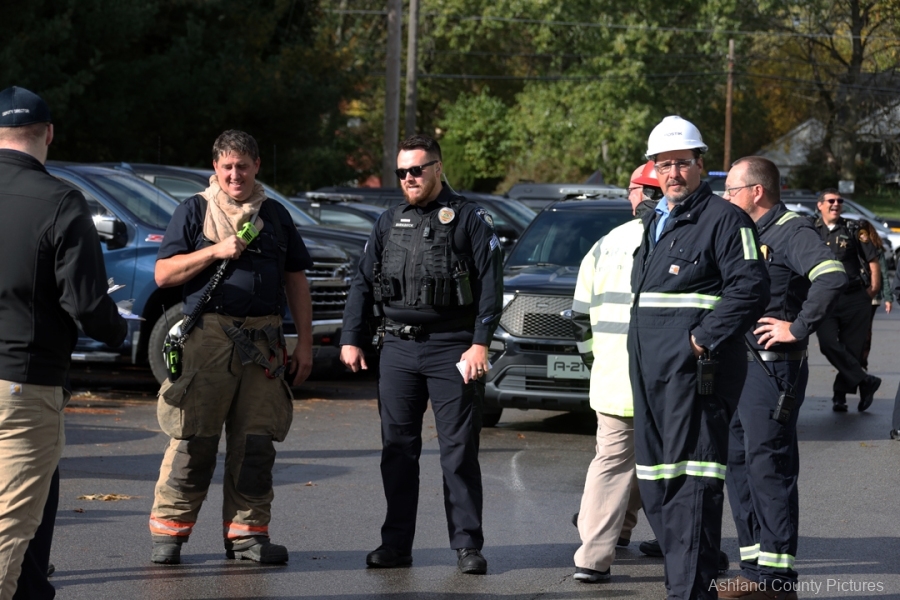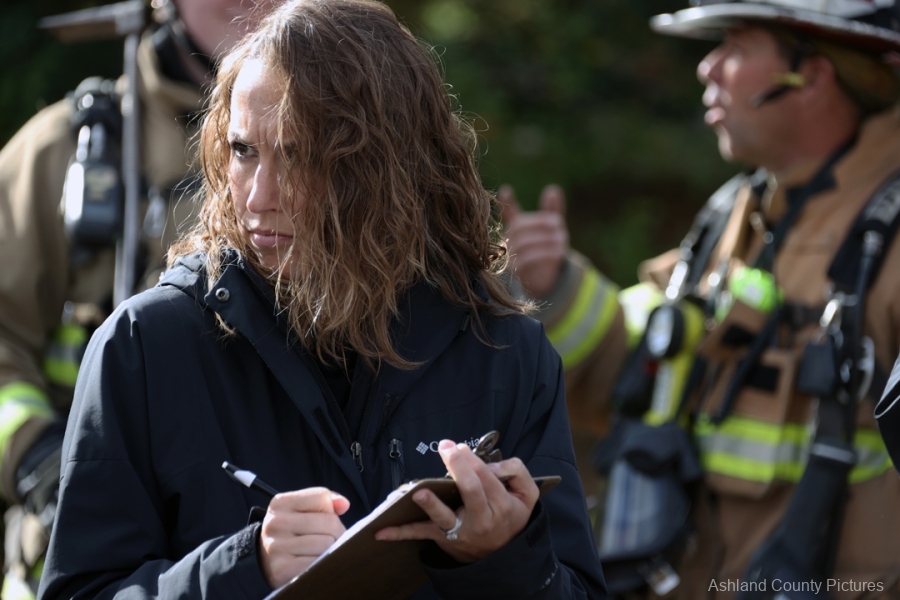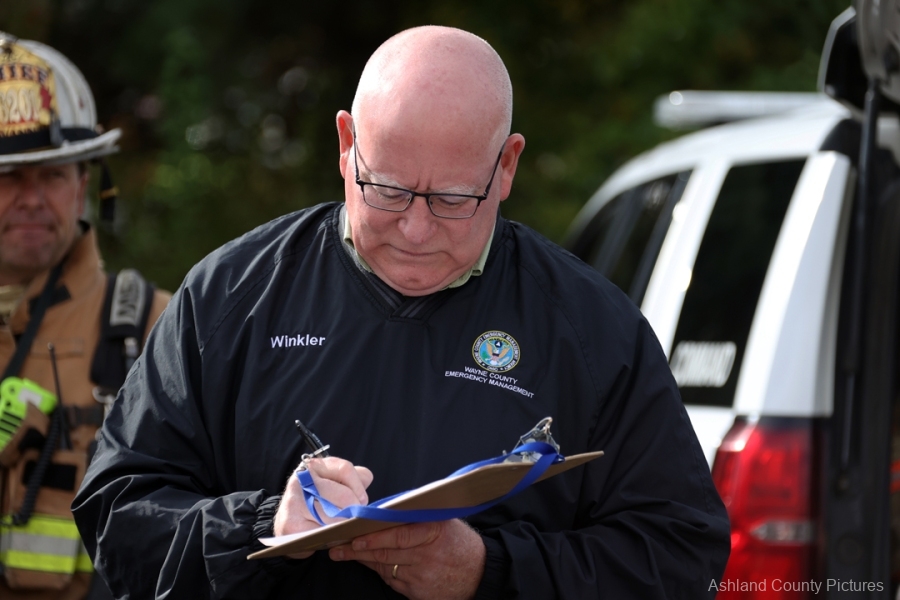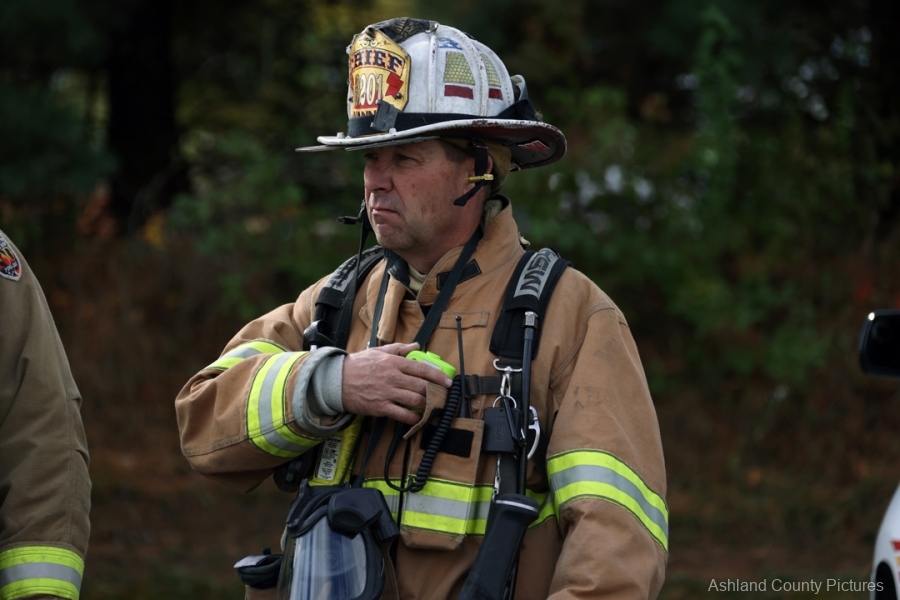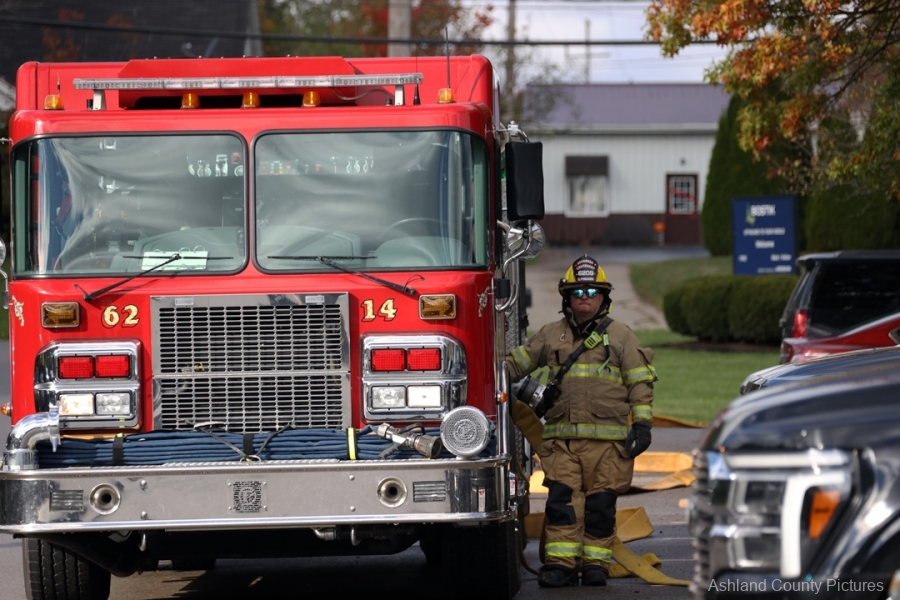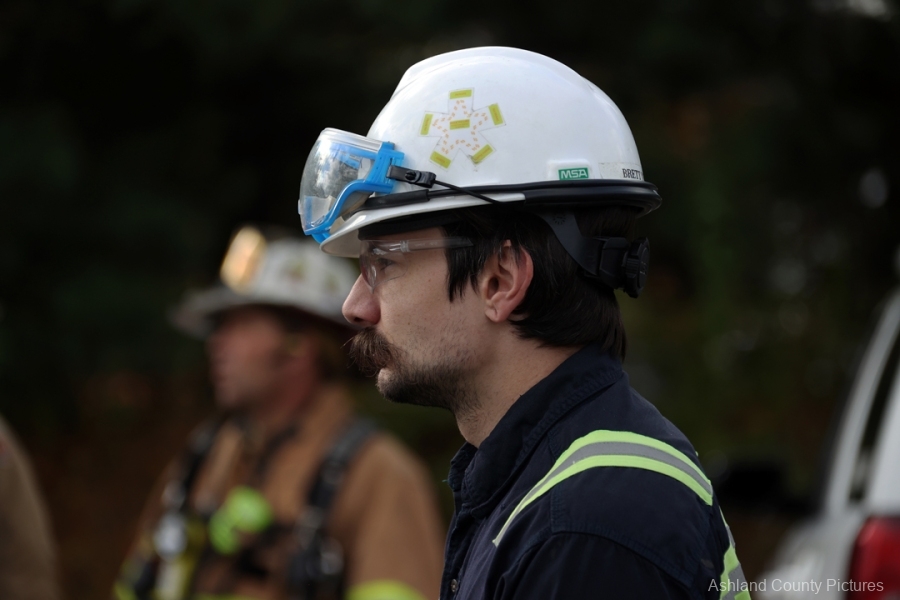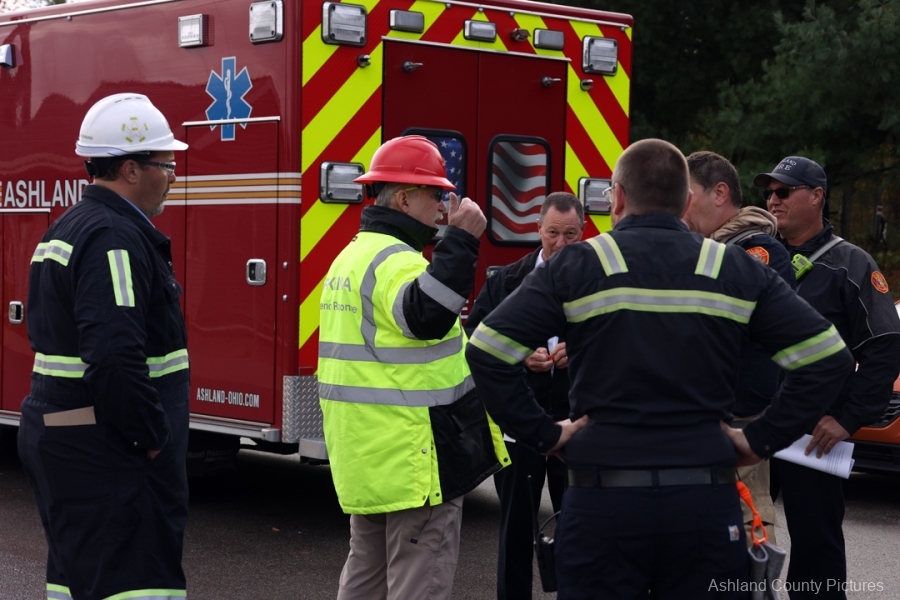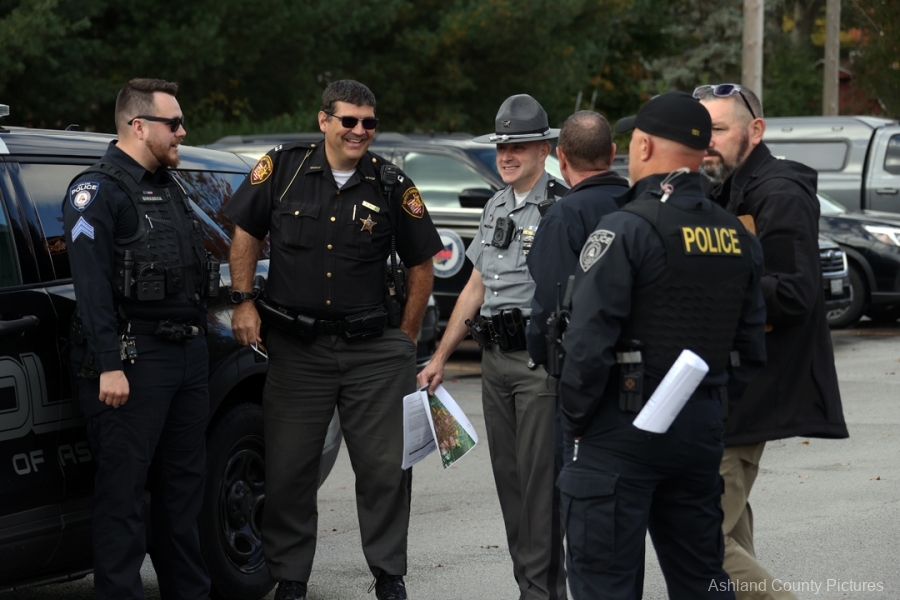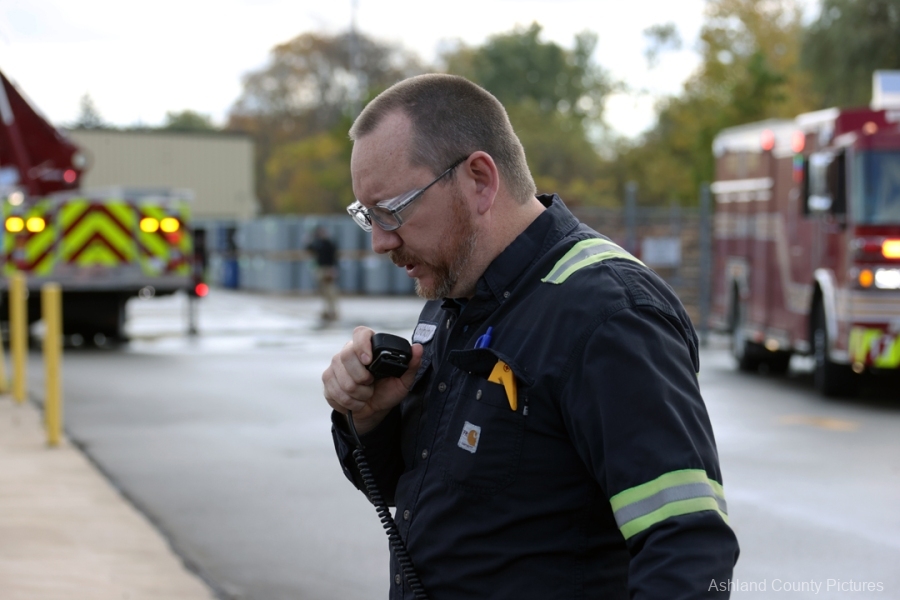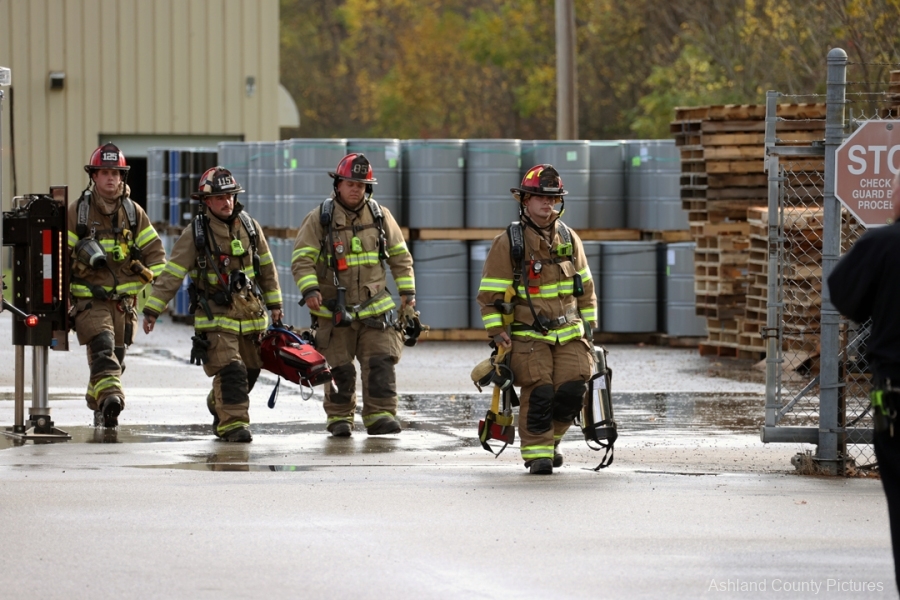Ashland County EMA and Local Partners Conduct Full-Scale Hazmat Exercise at Bostik/Arkema
The Ashland County Emergency Management Agency (EMA) and the Ashland County Local Emergency Planning Committee (LEPC) joined forces with Bostik/Arkema on Tuesday morning for a large-scale Hazardous Materials (Hazmat) training exercise at the company’s facility on Cottage Street. The full-scale drill was designed to test and improve interagency response to a high-risk chemical incident — and to strengthen coordination among first responders, public safety departments, and local industries.
Preparing for the Unthinkable
Ashland County EMA Director Anne Strouth explained that such exercises are not only State required but also serve as a vital reality check for agencies and businesses dealing with hazardous materials.
“The LEPC requires that we conduct these exercises annually,” Strouth said. “We alternate between tabletop, functional, and full-scale drills to test our abilities in case of a hazmat situation. These exercises help us identify any gaps and find ways to improve — but they also allow our local businesses to test their own safety protocols alongside us. When a real incident happens, we want the response to be seamless.”
Strouth added that EMA uses feedback from evaluators and agencies to produce an After-Action Report, identifying both strengths and improvement areas.
“After every exercise, we conduct what’s called a ‘hot wash’ where all agencies openly discuss what went well and what needs improvement,” she said. “All of that feedback is compiled into an After-Action Report with measurable objectives and deadlines so we can make each response better than the last.”
Simulated Chemical Emergency
The scenario simulated a catastrophic failure during the unloading of methyl ethyl ketone, a flammable and toxic chemical used in Bostik’s manufacturing process. According to Ashland Fire Department Captain Rob McCrea, the exercise was intentionally complex — involving simulated fire, a worker injury, and the threat of chemical release.
“The scenario was a trailer unloading product when a failure caused a fire and an operator injury,” McCrea said. “Methyl ethyl ketone is both toxic and highly flammable. If this really happened, you’d see a massive fireball — it’s a serious hazard. The unloading area is near large storage tanks, so a situation like this could escalate quickly.”
To mitigate the simulated threat, crews practiced unmanned water operations using aerial ladders, ensuring personnel remained at safe distances from the “blast zone.” Firefighters also utilized gas-detection monitors to assess atmospheric hazards and practiced using reverse 911 notifications to alert residents within a designated radius.
Participating agencies included the Ashland Fire Department, Savannah Fire, Polk Fire, Ashland Police Division, Ashland County Sheriff’s Office, Ohio State Highway Patrol, and the Ashland County EMA.
McCrea emphasized that while such a large-scale scenario hasn’t occurred in recent years, smaller chemical spills and fires are not uncommon.
“We all maintain hazmat certification levels and do refresher training throughout the year,” McCrea said. “The communication and interoperability we build during drills like this is huge. Everyone from fire to EMA to law enforcement has a role to play.”
Testing Volunteer and Communications Systems
The exercise also marked the first time Ashland County activated its Amateur Radio Operators and CERT (Community Emergency Response Team) during a county-wide simulation.
EMA Specialist Scott Engelhardt said it was an important test for the county’s volunteer-based communication network.
“Our amateur radio operators have never been activated for a drill in Ashland County,” Engelhardt explained. “We wanted to test their response time and our CERT team’s ability to mobilize. We also timed how long it took to deploy and set up our mobile command trailer. These are things you can’t evaluate without real-world scenarios.”
Representatives from Huron, Holmes, Knox, Wayne, and Richland County EMA offices also attended, serving as evaluators to record response times, communication flow, and interagency coordination.
Volunteer Support: A Crucial Link
Among the volunteers was Jeff Hardman, a licensed amateur radio operator and candidate for Ashland County Commissioner, who provided field communications during the exercise.
“There were about eight of us working with EMA today,” Hardman said. “Our job is to provide emergency communications and logistical support during events like this — feeding real-time data like wind speed, smoke conditions, and traffic observations back to the command center.”
He noted that amateur radio plays a vital backup role when traditional emergency communication systems become overloaded.
“When fire and law enforcement radios are swamped, we take over the peripheral communications,” Hardman added. “That allows responders to stay focused on the front line while we relay the other details. It’s one of those behind-the-scenes roles that makes a big difference in a real emergency.”
Building a Safer, Stronger Community
Director Strouth emphasized that while residents may see flashing lights and hazmat suits and assume the worst, these drills are exactly what make Ashland County safer.
“We do these exercises so that when a real incident happens — and they do happen — everyone knows their role,” she said. “The more we train, the faster and more efficiently we can protect the public.”
She added that several more exercises are already being planned, including additional company partnerships in late 2025 and throughout 2026.
“We’ve had three other companies reach out asking for help testing their safety plans,” Strouth said. “Our office supports all local businesses in this process, because preparedness is everyone’s responsibility.”

